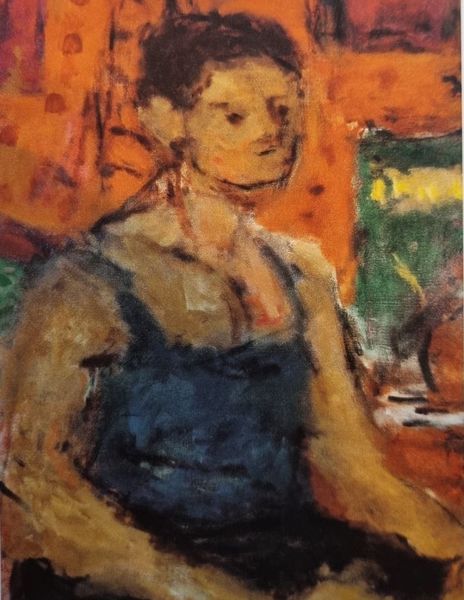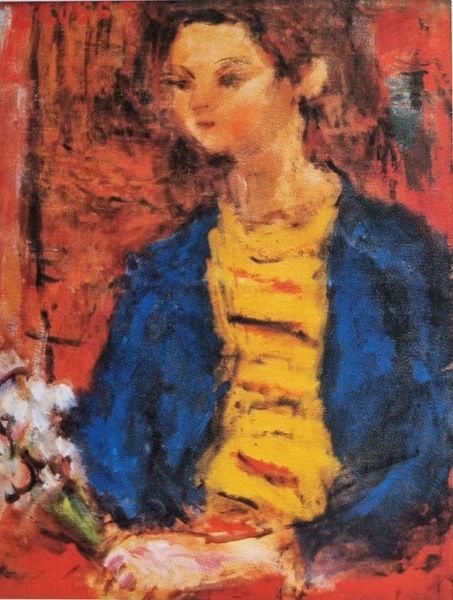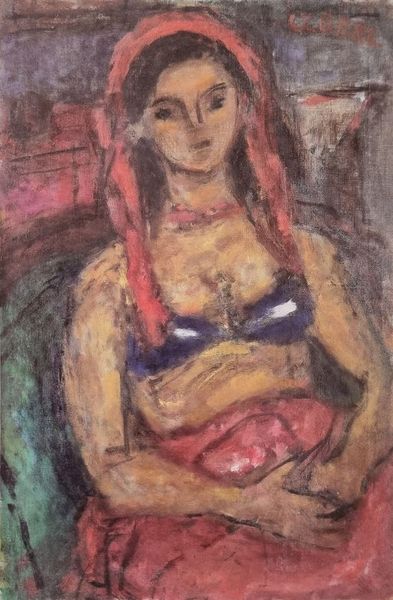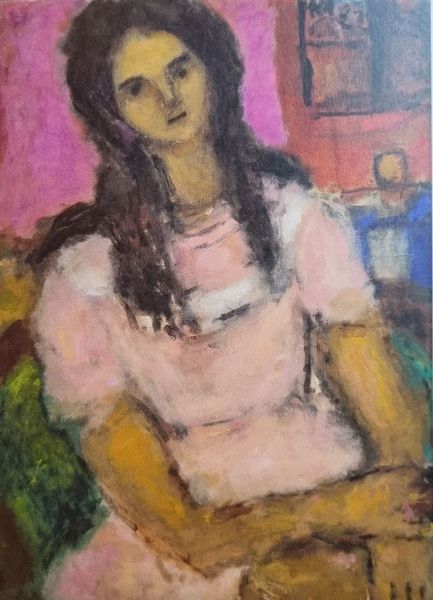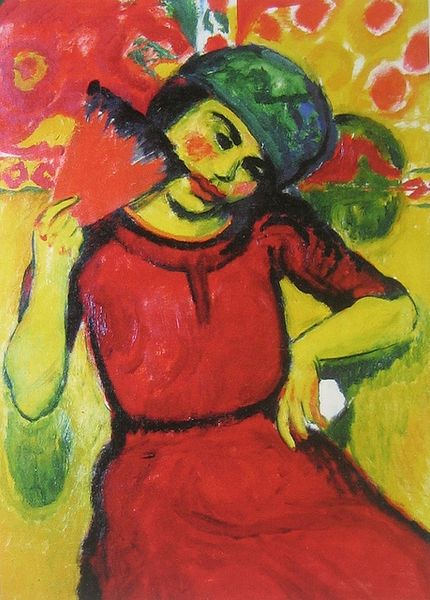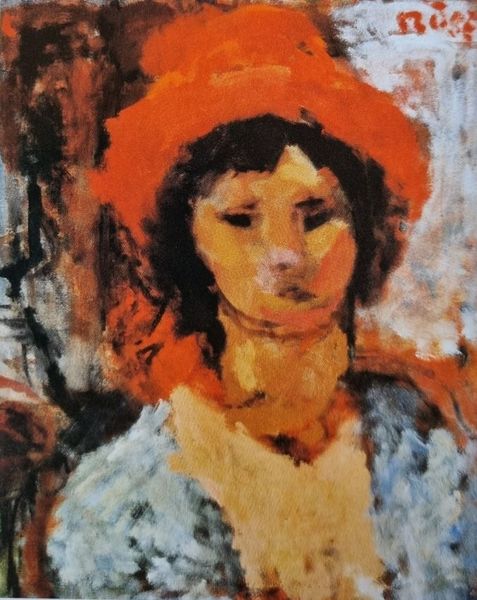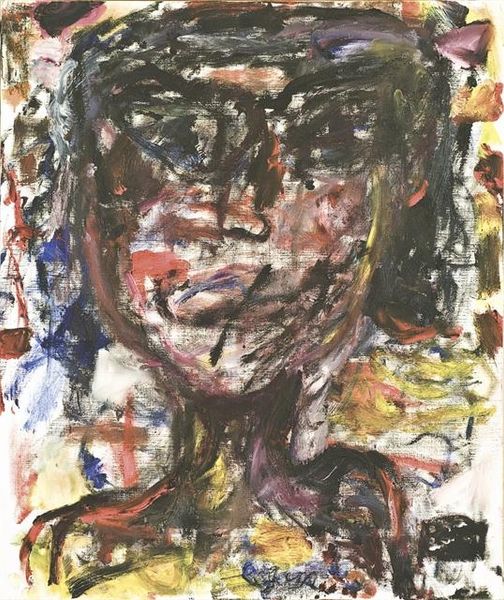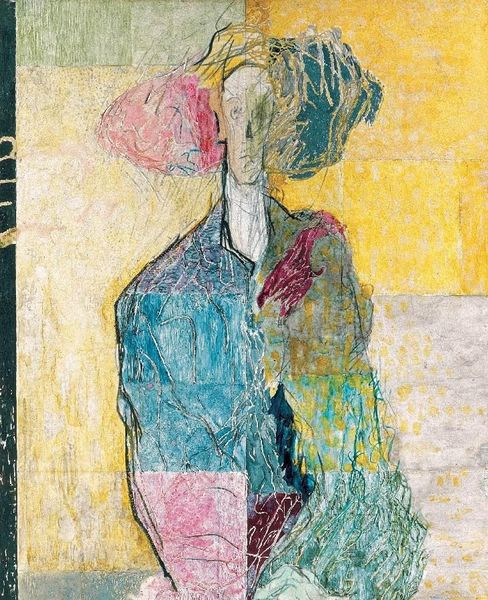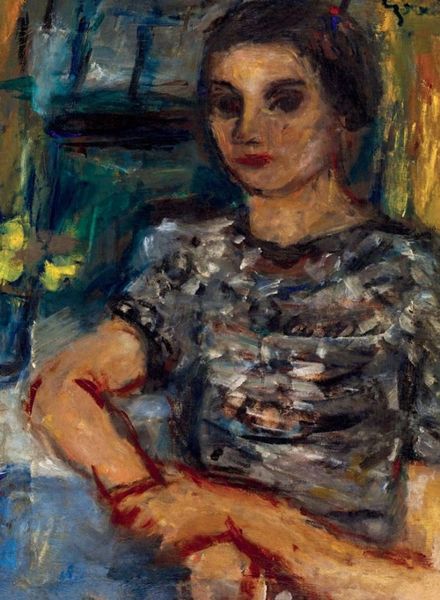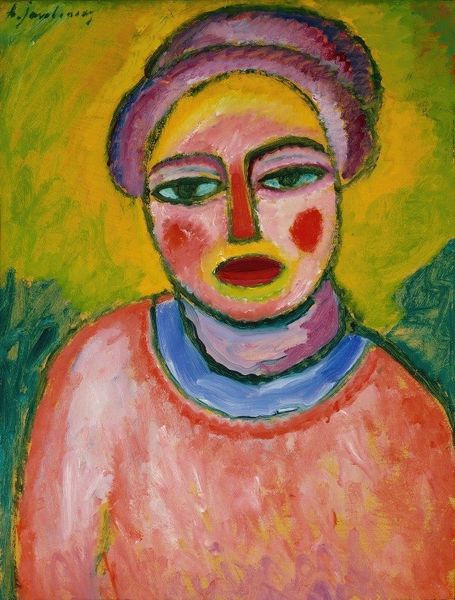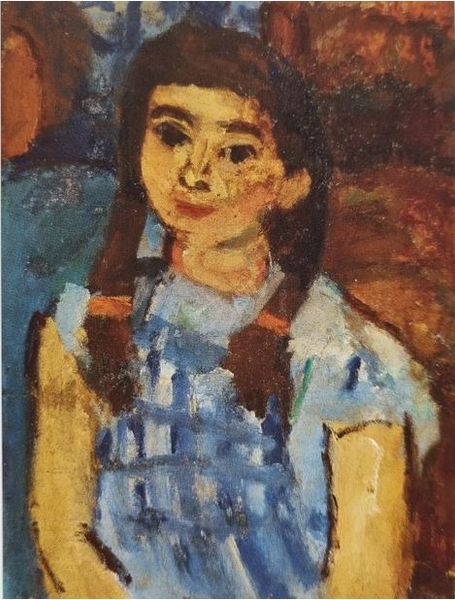
painting, oil-paint, impasto
#
portrait
#
fauvism
#
fauvism
#
painting
#
oil-paint
#
figuration
#
oil painting
#
impasto
#
modernism
Copyright: Bela Czobel,Fair Use
Curator: Here we see "Czóbel Béla Ülő Nő," rendered with visible brushstrokes, embodying a confident use of oil paint. I believe the Hungarian artist Béla Czóbel captured it during his fauvist period. Editor: There's a distinct intensity in her downward gaze, and I immediately read defiance, almost challenging societal expectations placed upon women of the time, especially when considering its bold colours and application. Curator: Absolutely. Czóbel's engagement with Fauvism put him at the forefront of avant-garde movements, particularly in expressing subjective emotional responses rather than adhering to academic representations. Considering how deeply patriarchal art institutions were at the time, embracing fauvism feels like a radical act itself. Editor: That's key. This impasto technique, this visceral handling of paint, translates directly to a rawness of emotion. The vibrant, seemingly clashing colors and distorted figuration break from convention. It’s an intriguing dialogue between form and inner state, hinting at the inner struggles and constraints imposed on the subject. Curator: Considering its time, this piece serves as a social document, highlighting modernism’s efforts in capturing the complexities of a changing world. Czóbel pushed the boundaries of representation, impacting subsequent generations of artists who sought alternative expressions of identity. Editor: I see "Czóbel Béla Ülő Nő" as both a historical record and a continued commentary on issues of representation, gender roles, and agency that persist today. Art’s ability to embody and challenge cultural norms, even silently, remains profoundly powerful. Curator: Indeed. It speaks to the dynamism of artistic creation in reflecting and challenging the times, fostering public dialogues around socio-political shifts. Editor: Art like this reminds us that visual representation can be a potent form of cultural disruption, with layers to dissect beyond aesthetic.
Comments
No comments
Be the first to comment and join the conversation on the ultimate creative platform.
